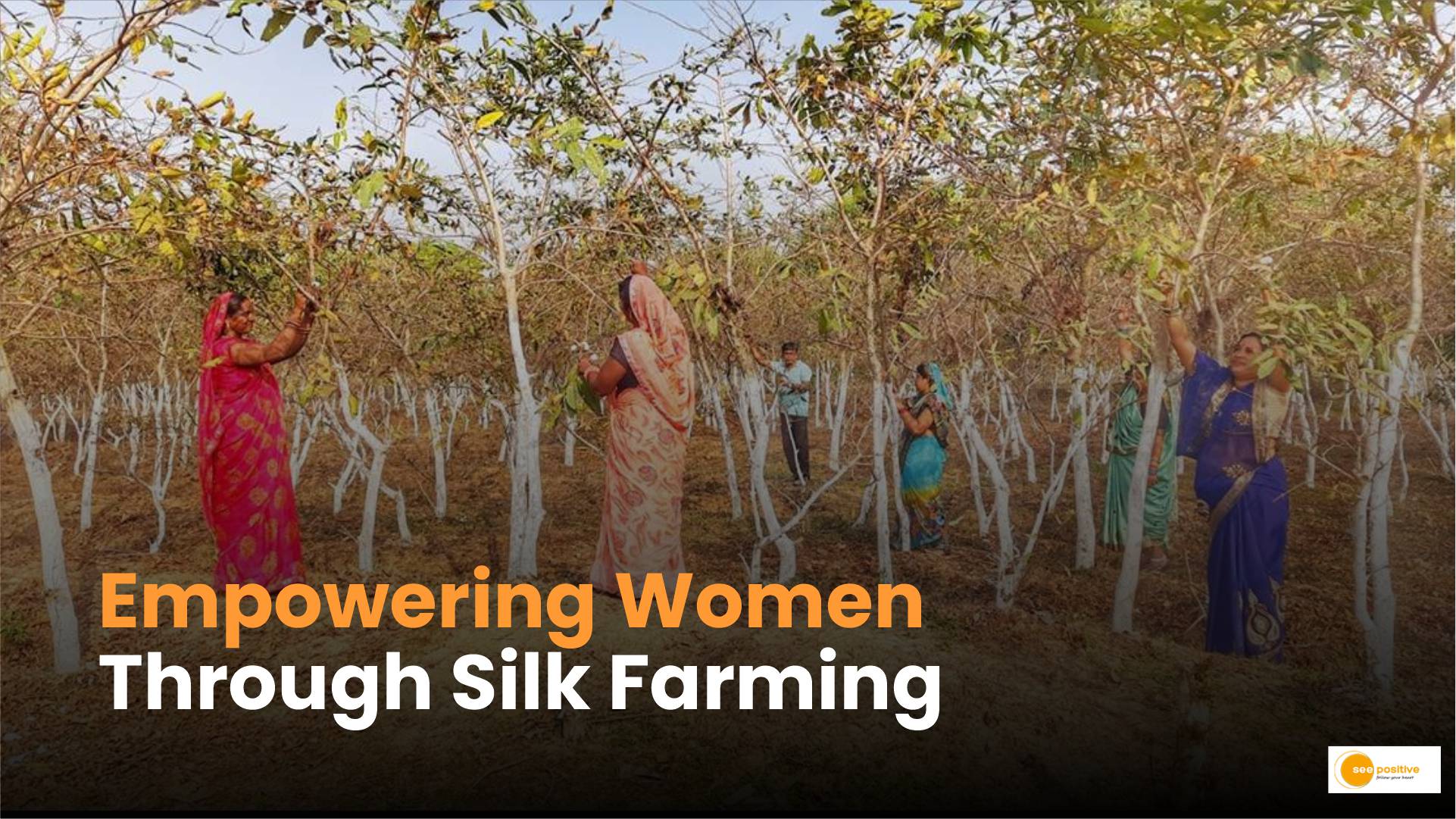The picturesque Jangjir-Champa district in India has witnessed a remarkable transformation, thanks to the efforts of a group of determined women who embarked on a journey into silk farming nearly eight years ago.
Amarika Sahu, Santoshi Sahu, Nisha Sahu, Chatubai Sahu, Duleshwari Sahu, and Chandrika Sahu, all residents of Khorsia village, defied the odds and ventured into silk cultivation on Arjun trees, an endeavour that seemed impossible but has now become a beacon of success.
Life for these women initially involved seasonal employment in their fields during the harvest, leaving them without a steady income for the rest of the year. Undeterred by this challenge, they came together and decided to delve into the world of silk farming, a joint initiative of the Silk Department and the Mahatma Gandhi National Rural Employment Guarantee Act (MGNREGA).
Equipped with determination and guided by the Silk Department, the group formed the Khorsia Silk Farming Self-Help Group. They embarked on the journey of silk farming and sericulture. Over the past three years, their hard work and dedication have translated into an additional income of approximately 3 lakh rupees, marking them as skilled sericulturists.
What is sericulture?
Sericulture is the technique of raising silkworms and collecting silk from them. The domestic silkmoth caterpillars (also known as ‘Bombyx Mori’) are the most common silkworm species used in sericulture. Other silkworms (such as Eri, Muga, and Tasar) are also farmed to produce ‘wild silks’.
Silk is a special kind of thread made from two different proteins – sericin and fibroin. About 80% of silk is made from fibroin, and it’s mainly found at the center of the thread. The rest, which is about 20%, is made up of sericin and forms a layer around the core.
The Journey of Silk Production:
Under the MGNREGA scheme, the group, with guidance from the Silk Department, initiated silk cultivation on 10 hectares of land. This involved the plantation of 41,000 silk cocoons and the nurturing of Arjun saplings.
Today, these saplings have grown into lush trees, standing 6 to 8 feet tall, symbolizing the success of their silk farming venture.
The silk produced by the group is not merely a symbol of their hard work; it has practical significance. The government, through the Silk Department, purchases their silk at a predetermined rate. This has significantly contributed to their earnings, transforming their lives and providing a stable financial foundation for their families.
The success of becoming skilled sericulturists has not only brought economic stability but has also opened up new horizons for these women. Beyond the traditional realm of agriculture, silk farming has emerged as an additional source of income, bringing prosperity to their households.
Environmental Impact:
Beyond the economic benefits, the tree plantation undertaken as part of the MGNREGA has had a broader impact. The greenery resulting from the initiative has not only enriched the lives of these women but has also contributed to the overall environmental well-being of the village.
Educational Empowerment:
The newfound financial stability has enabled these women to invest in the education of their children. With aspirations beyond their immediate surroundings, they are breaking the chains of limited opportunities, empowering the next generation through access to quality education.
Community Upliftment:
The success story of the Khorsia Silk Farming Self-Help Group has rippled through the community, inspiring others to explore alternative avenues for economic empowerment. It has fostered a sense of unity and shared progress, showcasing the potential within rural communities to drive change.
Silk Production Process
Silk production involves three main steps in sericulture:
1.Growing Mulberry Plants (Mariculture):
Mulberry leaves are grown for silkworms to eat. This involves cultivating mulberry plants through methods like using seeds, root grafting, or stem grafting. The most common method is stem grafting, where cuttings from a mature mulberry plant are planted. Mulberry leaves are then harvested by handpicking, branch cutting, or top shoot harvesting. One kilogram of mulberry leaves can feed around 50 silkworms from egg to cocoon stage.
2. Rearing Silkworms:
Silkworm rearing begins with the female silk moth laying eggs, usually 300-500 at a time. These eggs are disinfected and placed on a feeding bed with chopped mulberry leaves. The hatched larvae are transferred to the tray, and their appetite decreases as they grow. After reaching maturity, they spin a cocoon using saliva that solidifies into silk. This process takes 2-4 days.
3.Silk Reeling:
The final stage involves harvesting silk from the cocoons. Pupae inside the cocoon are killed by boiling, a process called stifling. The silk filaments are then reeled from the cocoon by boiling it for 15 minutes, reducing adhesion and allowing the separation of individual filaments. These filaments are twisted into a thread and re-boiled to enhance lustre, and one thread of silk contains about 50 filaments. From one cocoon, over 900 meters of filament can be obtained, completing the sericulture process.
Positive takeaway
The journey of these women from seasonal labourers to successful silk farmers is a testament to the transformative power of empowerment initiatives. Reshami Dhaage, or silk threads, have not only woven economic success but also happiness and progress into the lives of these resilient women.
The impact of their endeavours extends beyond personal financial gains, touching the environment, and education, and inspiring the broader community towards self-reliance and sustainable growth. As we celebrate their achievements, let this success story be a beacon for other communities, proving that with determination and collective effort, even the seemingly insurmountable challenges can be overcome.


